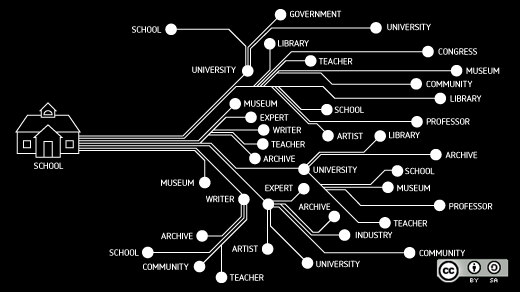It is no secret that American schools have struggled to prepare students for the jobs of today and tomorrow. Critics have blamed schools' shortcomings on a variety of factors: change-resistant bureaucracy, low standards, straying too far from the Three R's, inadequate teacher training, and more. One potential root cause of this fundamental issue is that the education system isn't built to be responsive to a rapidly changing environment.
Public education's aims—providing every student with a free and appropriate education regardless of race, sex, class, disability, etc.—are undeniably admirable. An unfortunate outgrowth of these aims is an emphasis on standardization that can be sluggish and stagnant. This wouldn't be such a problem if the world wasn't evolving so rapidly economically, technologically, politically, and socially. Parents, students, and employers are sounding the alarm about this issue. It's becoming clear that a structural shift will have to happen for the education system to become more responsive to the needs of its key stakeholders.
Ben Owens, a colleague of mine at Tri-County Early College, and I have recently embarked on a journey to see how open source principles could be fruitfully applied to education systems to address this issue. Our thoughts will be featured in our upcoming book, Open Up Education! How Open Source Learning Unlocks Opportunities, to be published later this year. We are building on David Preston's original work by developing a philosophy and a "source code" for a system that can be retrofitted to infinite educational contexts.
The beauty of the open source way is that it can help organizations keep pace with rapidly evolving markets and ecosystems. As Jim Whitehurst outlines in, The Open Organization, the ethos of open source applied to management can lead excellent outcomes.
For example, by tapping the power of the crowd and employing a meritocratic decision-making framework, the best ideas about education can emerge from anywhere. Currently, principals, consultants, policymakers, and superintendents are the primary decision-makers in education. This governance structure is excellent at perpetuating the status quo! Moreover, by maintaining a "release early, release often" ethos, all educators can test and refine new ideas quickly. Stakeholders' aversion to failure too often disrupts this process in schools. Meanwhile, a distributed leadership model—like those practiced by open source projects—can cultivate buy-in at all levels. Lack of buy-in has doomed many well-intentioned, but top-down education reform efforts.
Each of these factors could be a recipe for success in the education sector, where educators must stay in sync with the ever-changing needs of employers, democracies, and communities. We propose a framework for Open Source Learning, which rests on three foundational principles:
- Relentless collaboration,
- Freely exchanging knowledge and resources
- Culture of innovation
Here's what that means:
Through instilling an expectation of constant collaboration, educational leaders can challenge the isolation epidemic that plagues teachers, students, and schools. It appears that teachers are rarely collaborating or visiting each others' classrooms—at least in the United States. According to data from the 2013 OECD Teaching and Learning International Survey, 54% of U.S. teachers say they never teach jointly as a team in the same class, compared with 42% of teachers internationally. Moreover, according to a 2014 OECD study, a full 50% of U.S. teachers say they never observe other teachers' classes and provide feedback. This situation is of dire concern because collaboration can enhance teaching and learning immensely. Emphasis on protocols, processes, and structures that encourage collaboration will make working alone on anything that could possibly be improved by another reviewer become taboo.
Once this collaborative emphasis is in place, teachers, administrators, and students will have created enough trust to begin freely exchanging their best work. Students can present their projects to complete strangers; teachers will offer their best ideas on Twitter; administrators will invite others to witness the magic happening at their schools. Furthermore, teachers will start viewing their roles as curators of knowledge freely available on the internet and through a robust network. They will no longer pretend to be the exclusive purveyor of content to students, but will instead become Learning Guides who help students navigate an unfathomably complex tome of human knowledge that can be accessed by any smartphone.
The two preceding principles will enable a third: a culture of innovation that will lead every member of the school community to become an active agent in its continual improvement. An innovating school—one that has all the pieces of the open source education model in place—is indeed a force to be reckoned with. It has the organizational potency to reject the entrenched status quo and say once and for all that there is a better way. Moreover, every community member will be empowered to improve any process that is sub-par. This can manifest as outside-the-box teaching methods, flexible scheduling, novel behavioral management techniques, and alternative assessment methods.
This structural renovation is essential. If the noble aims of public education are to continue to have a place in our times, they need to be packaged in a framework that can enable them to remain relevant in an evolving landscape, where 65% of students may be doing jobs that we can't even imagine right now. Open Source Learning could be the game changer that makes that happen.





1 Comment